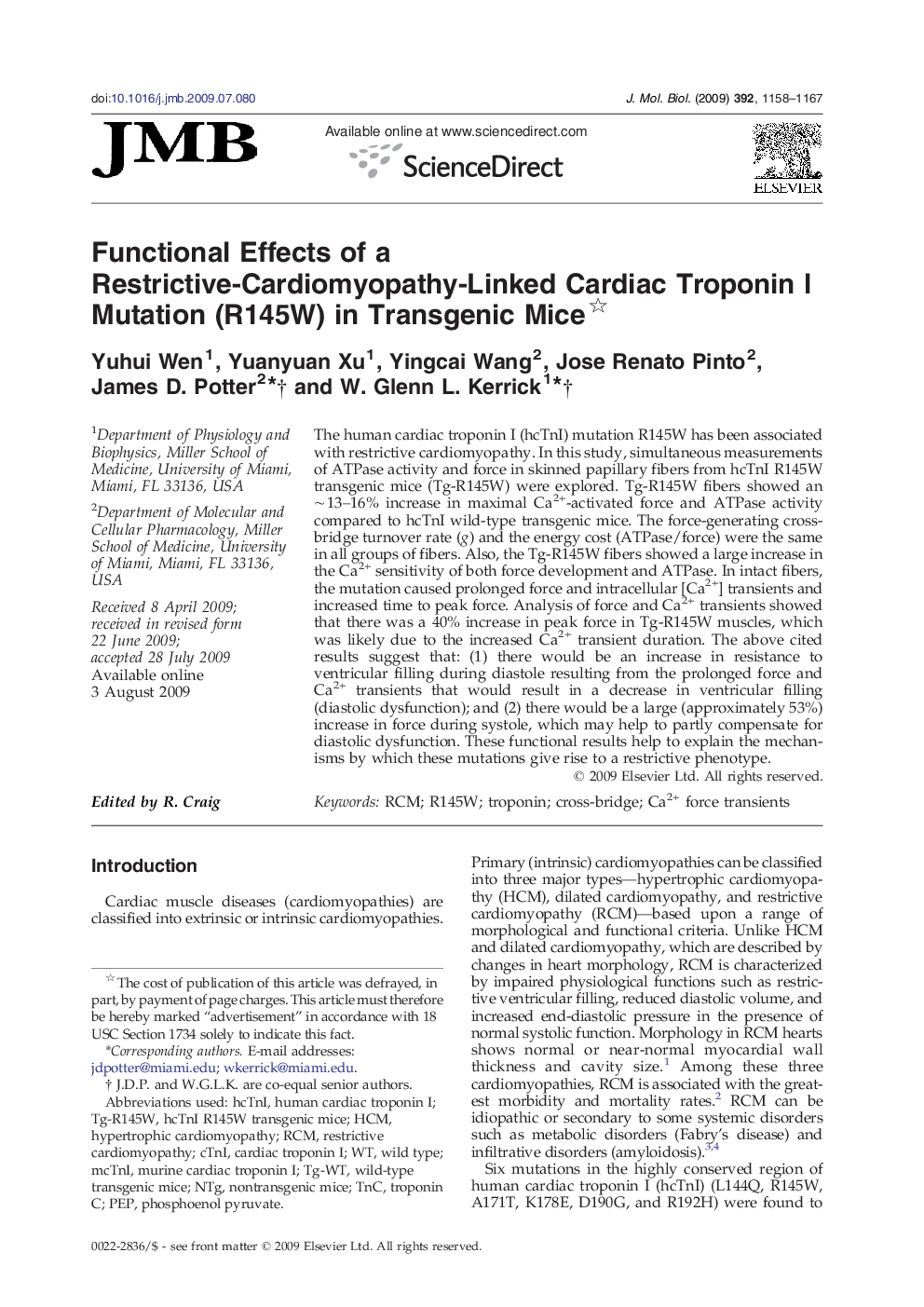| Article ID | Journal | Published Year | Pages | File Type |
|---|---|---|---|---|
| 2186268 | Journal of Molecular Biology | 2009 | 10 Pages |
The human cardiac troponin I (hcTnI) mutation R145W has been associated with restrictive cardiomyopathy. In this study, simultaneous measurements of ATPase activity and force in skinned papillary fibers from hcTnI R145W transgenic mice (Tg-R145W) were explored. Tg-R145W fibers showed an ∼ 13–16% increase in maximal Ca2+-activated force and ATPase activity compared to hcTnI wild-type transgenic mice. The force-generating cross-bridge turnover rate (g) and the energy cost (ATPase/force) were the same in all groups of fibers. Also, the Tg-R145W fibers showed a large increase in the Ca2+ sensitivity of both force development and ATPase. In intact fibers, the mutation caused prolonged force and intracellular [Ca2+] transients and increased time to peak force. Analysis of force and Ca2+ transients showed that there was a 40% increase in peak force in Tg-R145W muscles, which was likely due to the increased Ca2+ transient duration. The above cited results suggest that: (1) there would be an increase in resistance to ventricular filling during diastole resulting from the prolonged force and Ca2+ transients that would result in a decrease in ventricular filling (diastolic dysfunction); and (2) there would be a large (approximately 53%) increase in force during systole, which may help to partly compensate for diastolic dysfunction. These functional results help to explain the mechanisms by which these mutations give rise to a restrictive phenotype.
